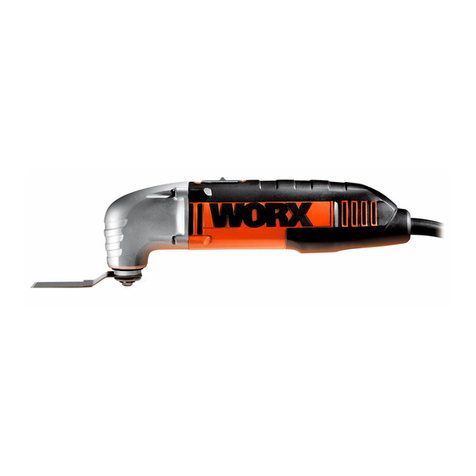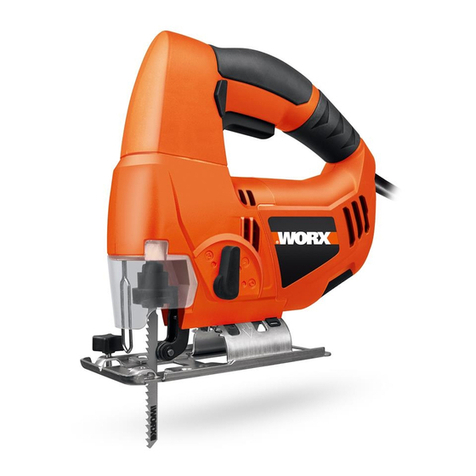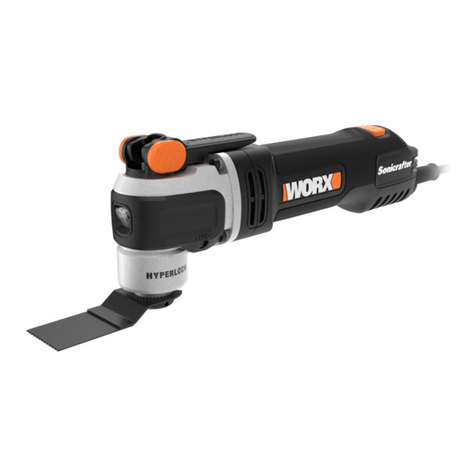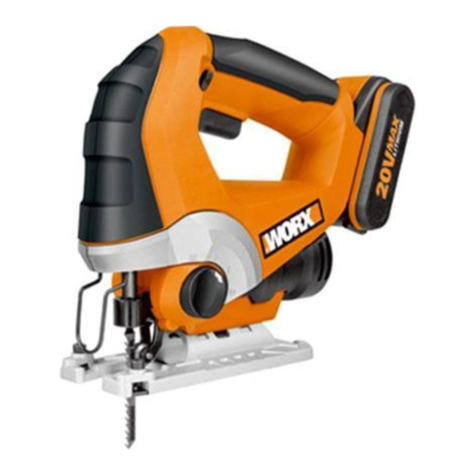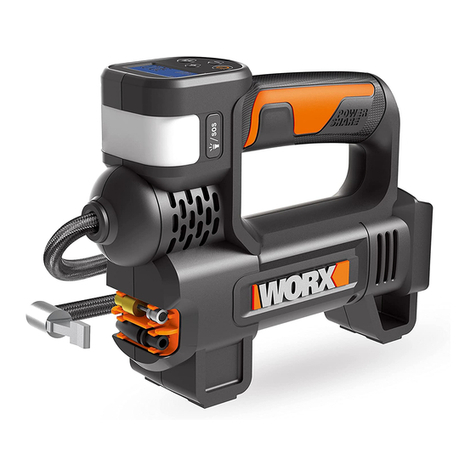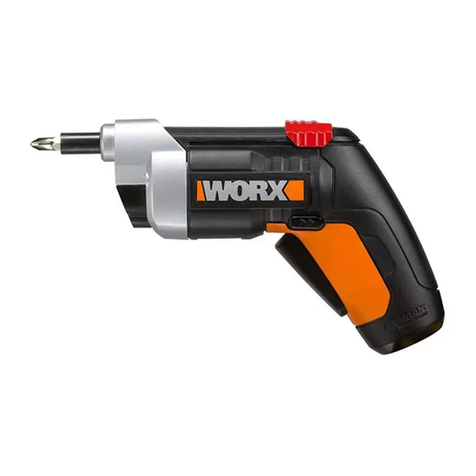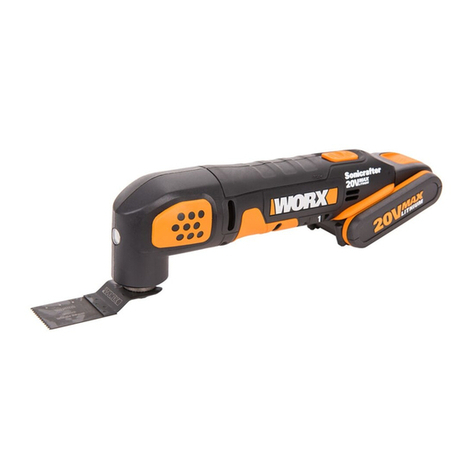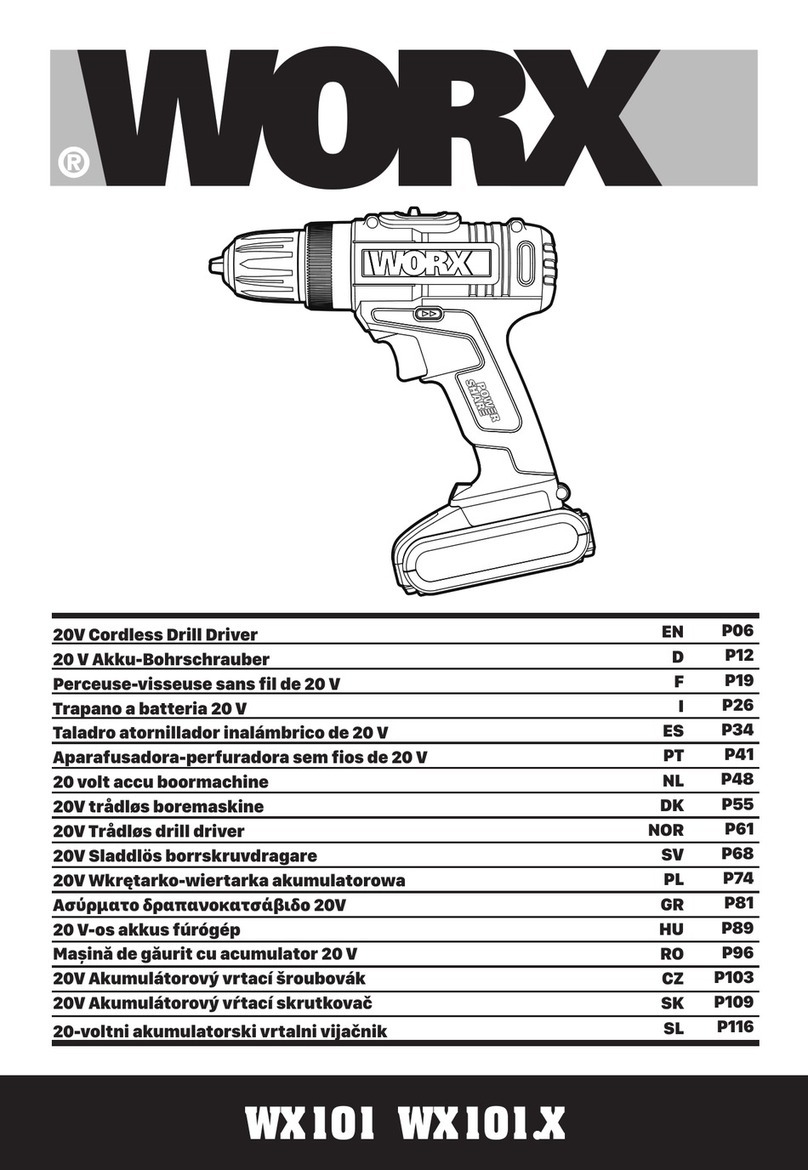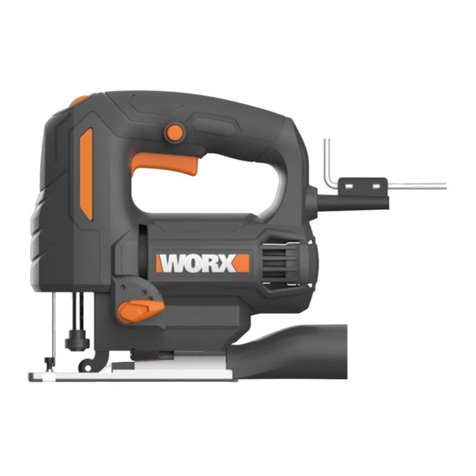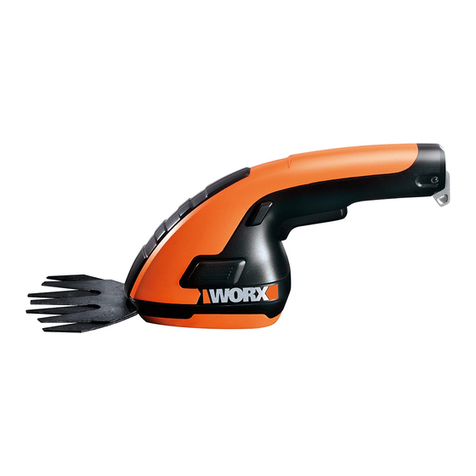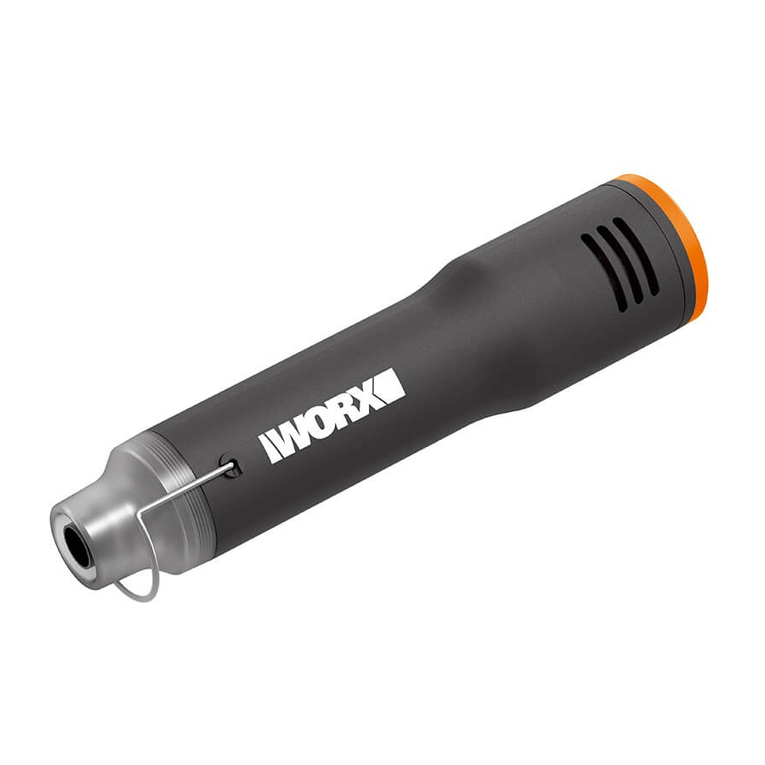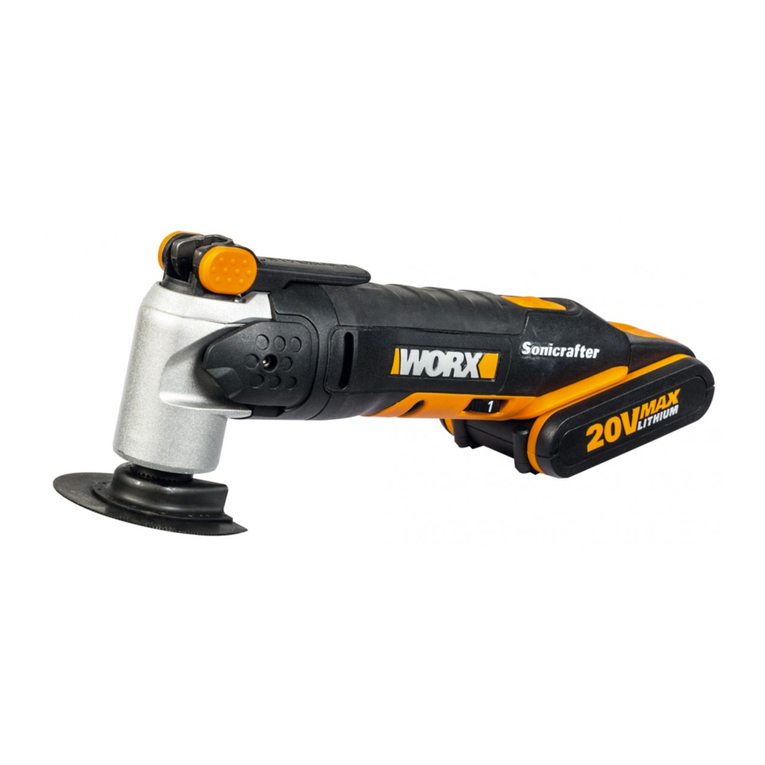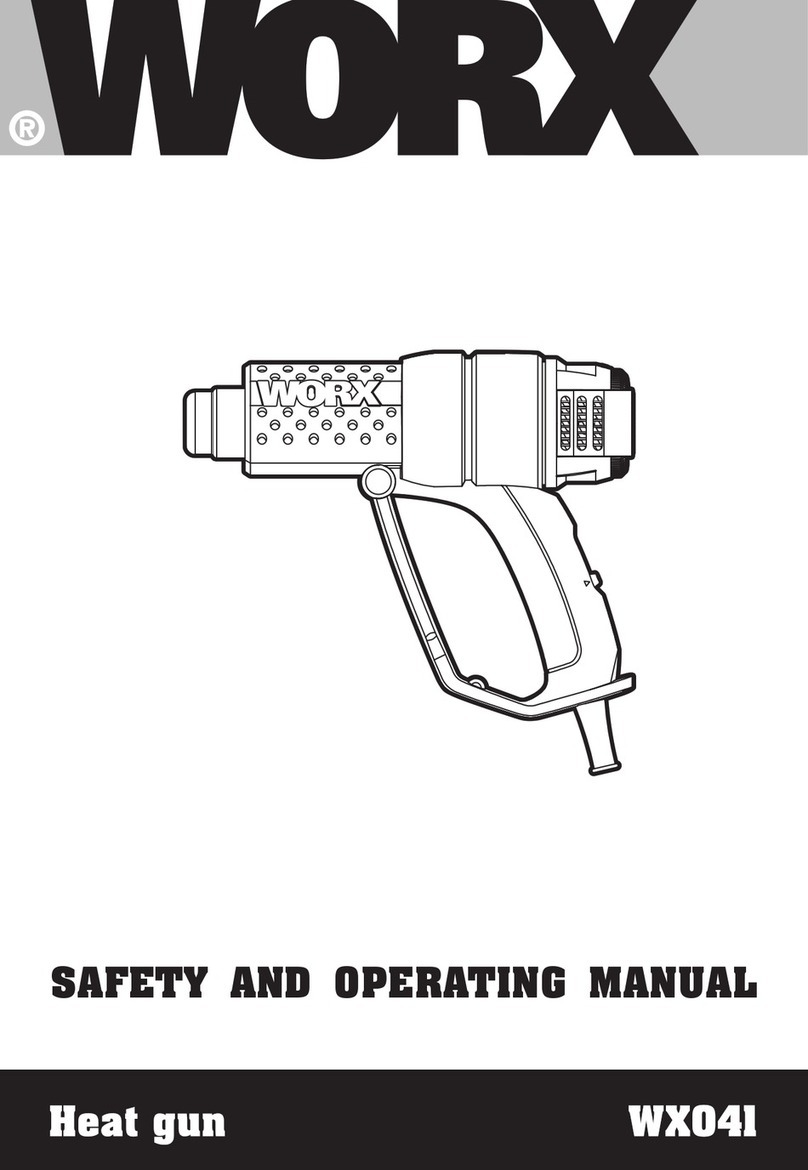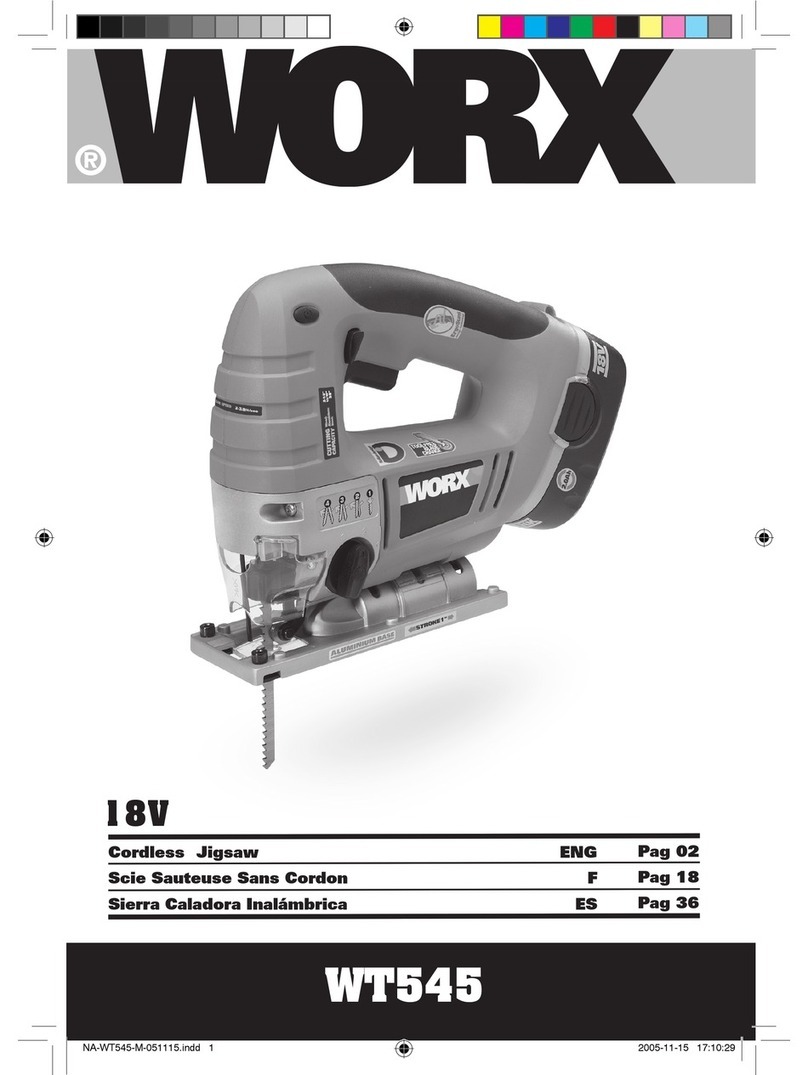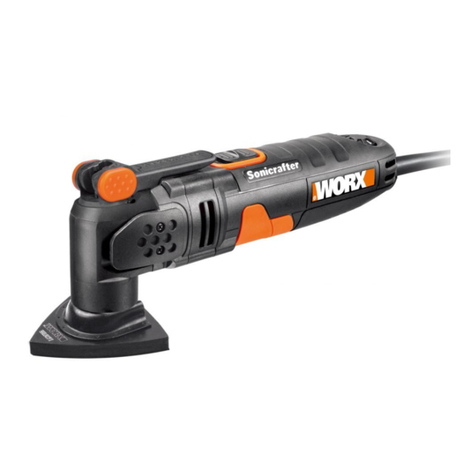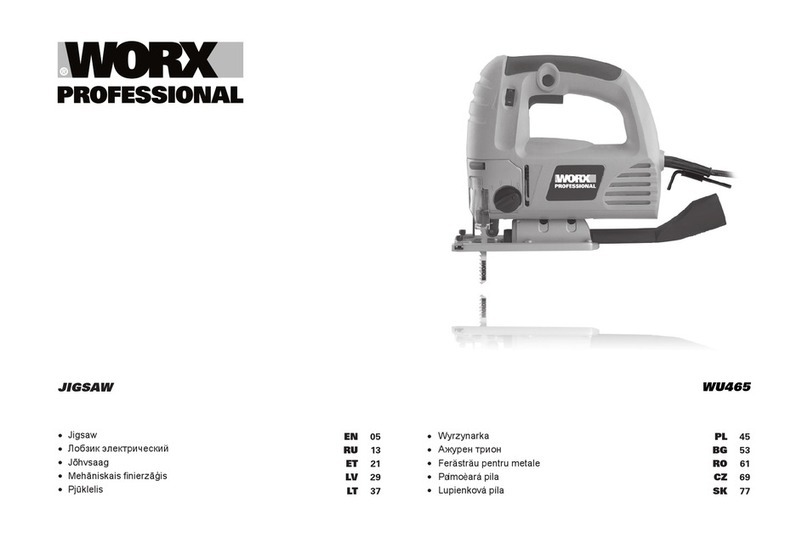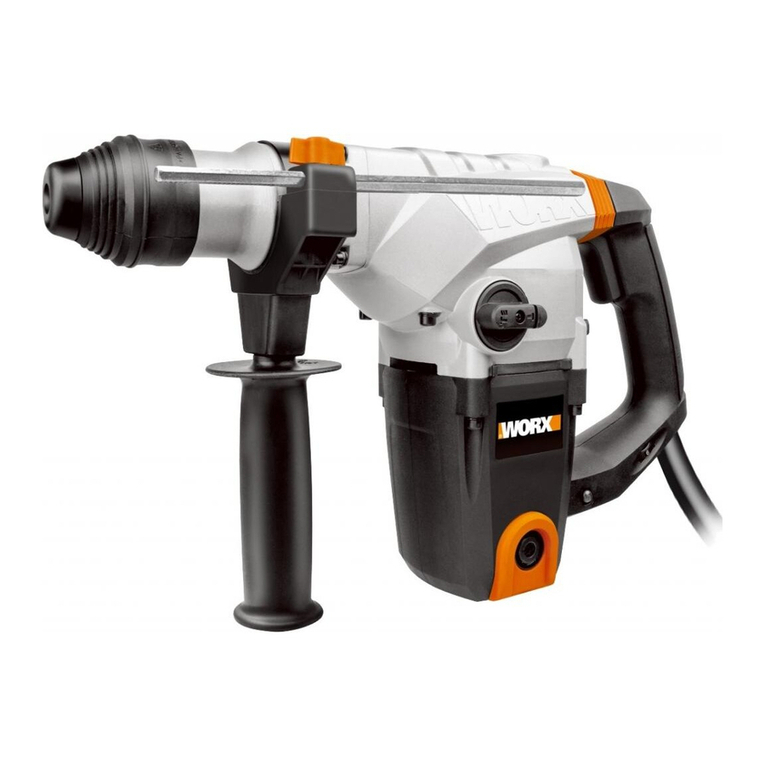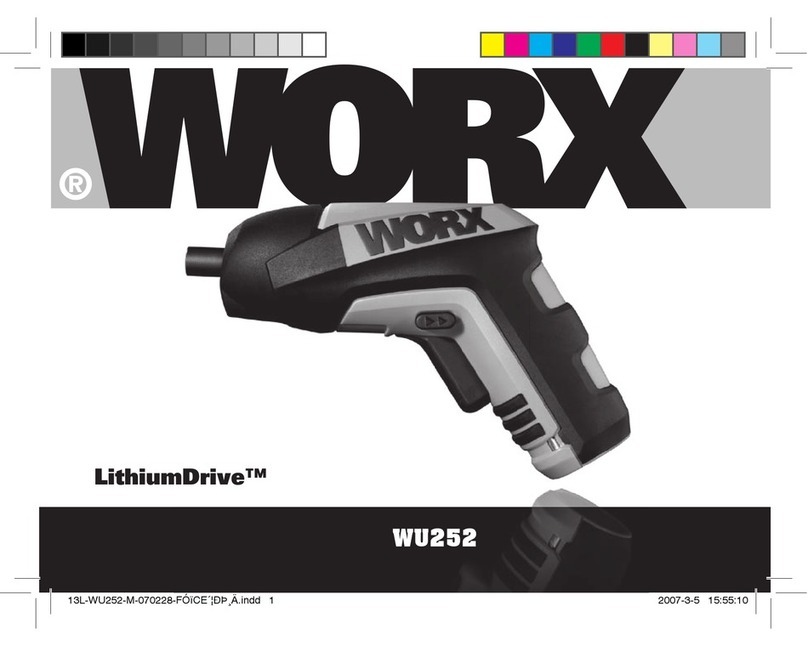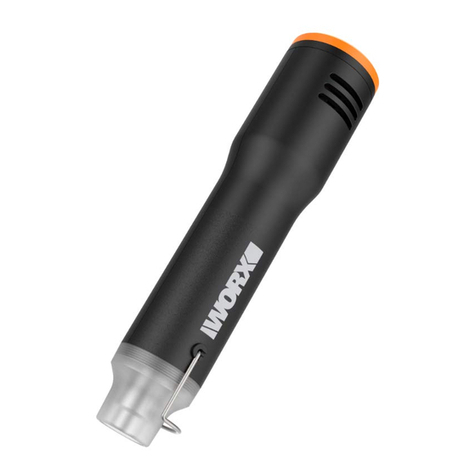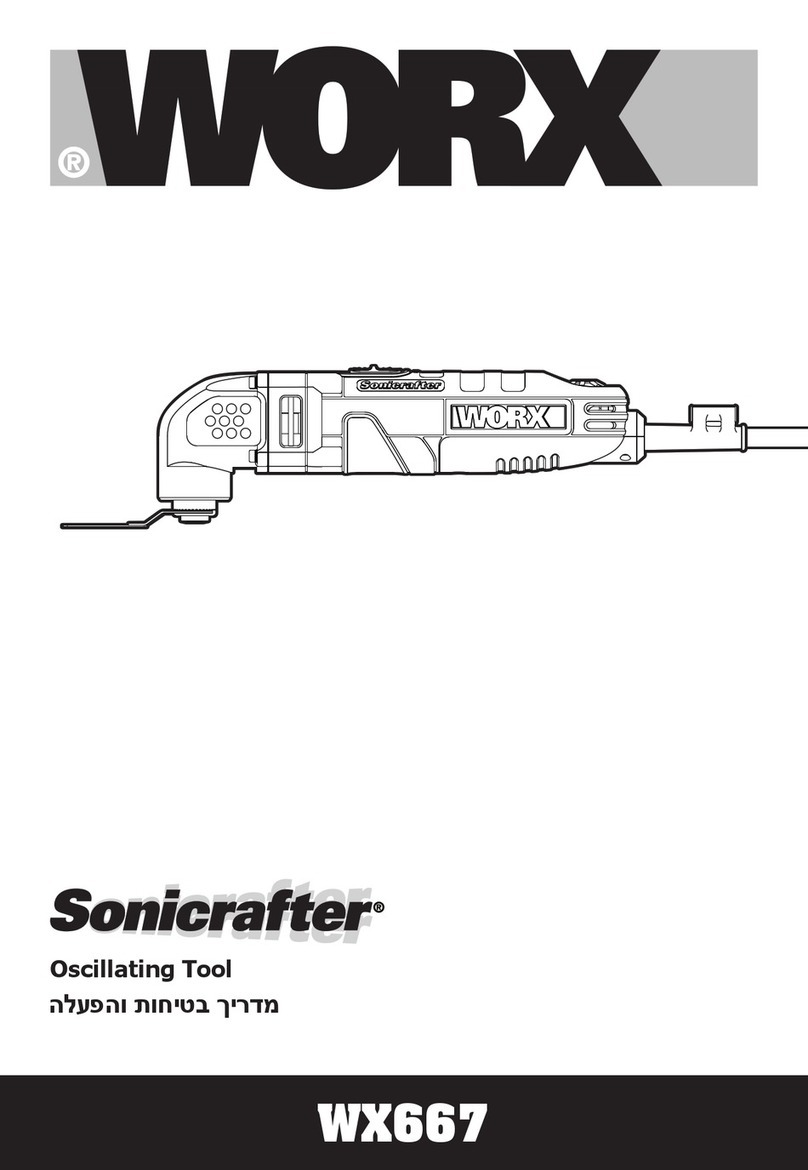10
*Funktioniert mit dem Zubehör von anderen
oszillierenden Markenwerkzeugen.
Die folgenden kompatiblen Marken sind
Warenzeichen, die im Eigentum Dritter
stehen und von den jeweiligen Eigentümern
eingetragen sein können: Black & Decker®,
Bosch®, Chicago Electric®, Craftsman®,
Dremel®, Fein®, Genesis®, Makita®,
Mastercraft®, Milwaukee®, Performax®, Porter
Cable®, Ridgid®, Ryobi®, Skil®, and Tool Shop®.
Abgebildetes oder beschriebenes Zubehör
gehört teilweise nicht zum Lieferumfang.
TECHNISCHE DATEN
Typ WX667 (6-Bezeichnung der
Maschine, Repräsentant des Hochfrequenz-
Multifunktionswerkzeug )
Nennspannung 230-240V~50Hz
Nennleistung 230W
Schwingfrequenz 11000-20000/min
Schutzisolation /ll
Gewicht( ohne Netzkabel) 1.3kg
INFORMATIONEN ÜBER
LÄRM
Gewichteter Schalldruck LpA:73.7dB(A)
Gewichtete Schallleistung LwA:84.7dB(A)
KpA&KwA: 3.0dB(A)
Tragen Sie bei einem Schalldruck über einen
Gehörschutz 80dB(A)
INFORMATIONEN ÜBER
VIBRATIONEN
Vibrationsgesamtmesswertermittlung gemäß
EN 60745:
Typischer gewichteter
Vibrationswert
Vibrationsemissionswert
ah= 4.690m/s2
Unsicherheit K = 1.5 m/s²
Der angegebene Gesamtvibrationswert kann zum
Vergleich eines Werkzeugs mit einem anderen
und auch zur vorläufigen Expositionsbewertung
verwendet werden.
WARNUNG: Der Vibrationsemissionswert
kann während des tatsächlichen Gebrauchs
des Elektrowerkzeugs vom angegebenen Wert
abweichen, je nachdem, wie das Werkzeug gemäß
folgenden Beispielen und weiteren
Verwendungsmöglichkeiten eingesetzt wird:
Anwendung des Werkzeugs und der zu schneidenden
oder schleifenden Materialien.
Der Pflege- und Wartungszustand des Werkzeugs.
Die Verwendung des richtigen Zubehörs und dessen
Schärfe und Zustand.
Die Festigkeit der Handgriffe und die Benutzung von
Antivibrations zubehör.
Der bestimmungsgemäß und diesen Anweisungen
entsprechende Gebrauch.
Wird dieses Werkzeug nicht angemessen
gehandhabt, kann es zum Auftreten des Hand-
Arm-Vibrationssyndroms kommen.
WARNUNG: Um genau zu sein, sollte ein
Abschätzung des Belastungsgrades aller
Arbeitsabschnitte während tatsächlicher Verwendung
berücksichtigt werden, z.B. die Zeiten, wenn das
Werkzeug ausgeschaltet ist, und wenn es sich im
Leerlauf befindet und eigentlich nicht eingesetzt wird.
Auf diese Weise kann der Belastungsgrad während
der gesamten Arbeitszeit möglicherweise wesentlich
gemindert werden.
So minimieren Sie das Risiko, dem Sie bei
Vibrationen ausgesetzt sind.
Verwenden Sie IMMER scharfe Meißel, Bohrer und
Sägeblätter.
Pflegen Sie dieses Werkzeug den Anweisungen
entsprechend und achten Sie stets auf eine gutes
Einfetten (wo erforderlich).
Bei regelmäßiger Verwendung von Elektrowerkzeug
sollten Sie in Antivibrations zubehör investieren.
Vermeiden Sie den Einsatz von Werkzeugen bei
Temperaturen von 10ºC oder darunter.
Erstellen Sie einen Arbeitsplan, um die Verwendung
von hoch vibrierenden Werkzeugen auf mehrereTage
zu verteilen.
1. EIN/AUS-SCHALTER
2. VARIABLER GESCHWINDIGKEIT
3.
KONSTANTE GESCHWINDIGKEITSELEKTORNIK
4. LÜFTUNGSSCHLITZE
5. UNIVERSELLE ZUBEHÖRSCHNITTSTELLE*
6.
KLEINER FLANSCH (FÜR SCHLEIFPADS ANDERER MARKEN)
7. FLANSCH
